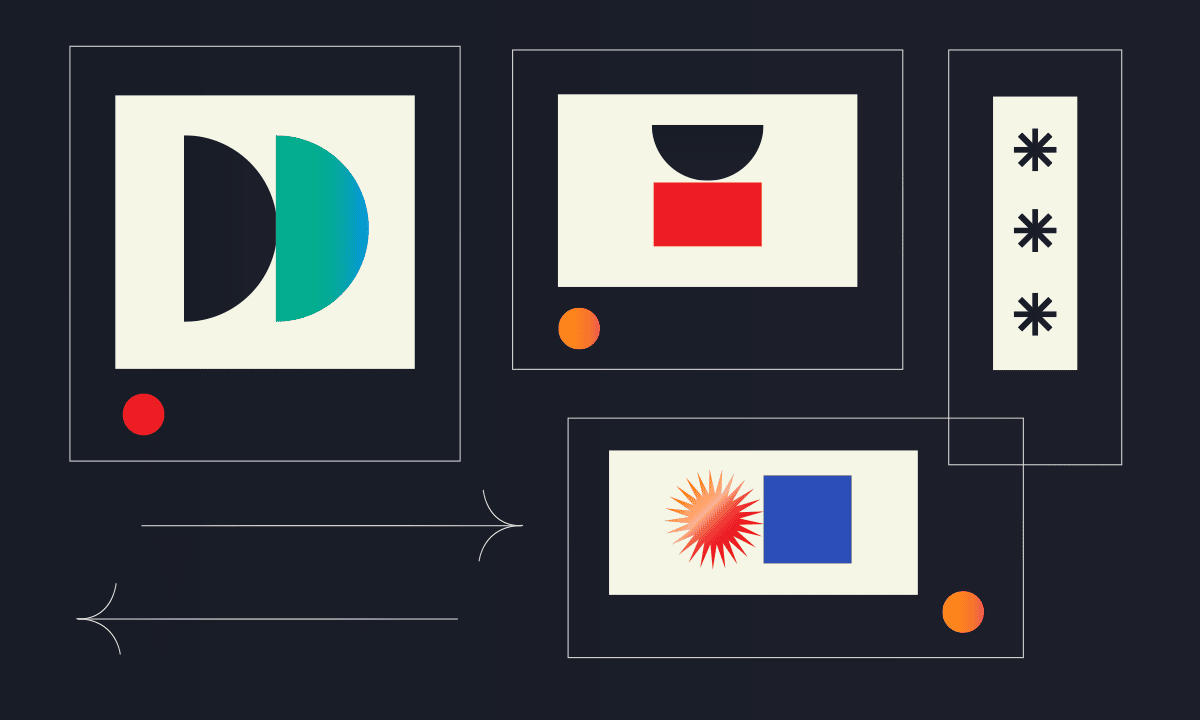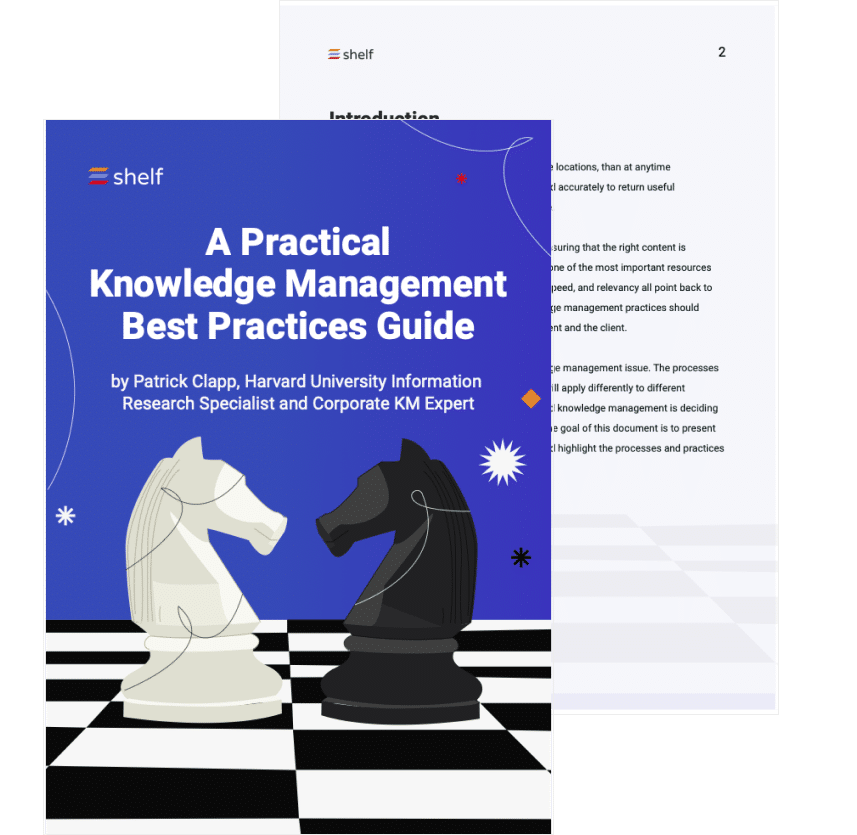For your business to be efficient and deliver a top-notch customer experience, you need a comprehensive knowledge management system. A knowledge management framework provides a high-level overview of your entire knowledge management system.
It’s the first step in implementing a knowledge management system and provides the guidance you need to choose the best tools and solutions.
What is a knowledge management framework?
A knowledge management framework is a structure for creating a knowledge management system that establishes a standard for knowledge work.
KCS, or Knowledge Centered Service, is a methodology that serves as a popular knowledge management framework for companies that desire to establish best practices.
Without a comprehensive knowledge management framework, your knowledge management tools won’t work together and will be an assortment of unmatched applications.
8 components of a knowledge management framework
To create a knowledge management framework, you must include all the elements related to your knowledge and what you do with your knowledge.
There are eight elements of a knowledge framework to consider as identified by knowledge management consultants at Knoco. This framework creates the structure a knowledge management team needs to make knowledge easy to access and reliable.
1People
Putting the right people in place is the first step in building your knowledge management framework. You should include the specific roles and accountabilities associated with each employee.
Begin by identifying the senior leaders with the highest stake in your knowledge management system. These key stakeholders will help get your knowledge management framework implemented and adopted.
As your knowledge management implementation matures, you’ll want to establish a knowledge management expert in every department. This person will be responsible for ensuring that all of the information from their department is up-to-date and that there is no knowledge loss when an employee transfers roles or leaves your company.
You’ll also need to designate roles for introducing and training new employees on your knowledge management system. No one knows who is responsible for which aspect of knowledge management unless you include specific roles and accountabilities.
2Processes
Understanding how you collect, share, and manage knowledge helps you craft a more robust framework. Your knowledge processes will help ensure quality, consistency, and safety in your business operations. Include all knowledge data points you want to make available to your employees.
You can scale your framework as you mature in knowledge management, so you may want to start with a few key departments and grow from there.
Develop workflows to create, edit, and review information to align with your company’s standards and needs. You should also include workflows for all stages of the information lifecycle to determine how you’ll archive outdated content to guarantee everyone is working with accurate and updated information.
3Technology
Technology includes all the applications and software you need to create, store, share, and access your organization’s information. A knowledge management platform is the hub of your knowledge management system.
Look for a platform that integrates with the tools you already use and allows easy integration. You also need a platform with secure storage because your information is one of your company’s most valuable assets.
Technology alone won’t provide a comprehensive knowledge management system, but it will be a crucial part of your framework.
4Governance
There are three factors governing your knowledge system that your employees need to know:
- Who is responsible for your knowledge management procedures
- How to adhere to your knowledge management procedures
- What is the impact of not following knowledge management procedures
Address these factors in your team culture, including establishing metrics and providing support in terms of time, money, and training. Clearly defined knowledge management policies help employees follow your knowledge management system. Your policies should include knowledge management expectations and accountability.
5Conversation
Once your knowledge enablers are in place, you can focus on what you’ll do with your information. The conversation is a part of knowledge management. Whether formal or informal, talking encourages innovation, empathy, ethical behavior, and cultural cohesion.
People participating in discussions share latent knowledge, insights, ideas, practices, and experiences.
6Capture
While conversations play an essential role in sharing and expanding your organization’s knowledge, capturing the information from those conversations scales its benefit to the entire company. Much of your organizational knowledge resides with specific employees. Their knowledge may be of value not only to them but to the rest of your employees.
Using a knowledge management platform allows you to easily capture and share knowledge from employees, consultants, and others, making it valuable to everyone and preventing knowledge loss.
7Synthesis
Information will soon inundate you if your knowledge management solution allows easy capturing. You may have individual documents that contradict each other.
Find a way to organize and make sense of all of the input you receive. A knowledge synthesis exercise should summarize, collate, and make sense of multiple sources of knowledge by converting these sources into a unified source of truth.
This source of truth for knowledge can then be relied upon to guide business decisions and activities.
8Access
Even the best framework will be useless if you can’t easily access your knowledge. Your knowledge management platform should be easy to use, accessible everywhere your employees need it, and provide advanced search functionality.
Once you’ve put so much effort into creating, capturing, and synthesizing your knowledge, you’ll want your employees to be able to access it easily—and your knowledge management tool should optimize for this task.
Apply KM best practices to your framework
Your knowledge management framework doesn’t just define the various elements of your knowledge management system. It serves as a foundation to create a knowledge map that outlines the process of creating, distributing, scaling, and optimizing your organization’s knowledge.
As you’re designing your knowledge management framework, consider the following knowledge management best practices:
Identify sources of tacit and explicit knowledge
Your company undoubtedly has multiple sources of information. Think about who or what contains the information vital to your organization. You may already have an employee handbook and other sources of documented information that are easy to locate. However, you probably also have many sources of tacit information that can be harder to identify. Consider how your knowledge is currently shared. Is it passed verbally from managers to employees? Try to document all valuable sources of information.
Gather and capture information
Once you’ve identified all sources of information, you need to create the structure for the flow of knowledge. The next step is to categorize, map, organize, and store it to make it more accessible and faster to use. You’ll need to use appropriate technology to capture knowledge in various formats.
Process your information
When you start analyzing your knowledge, you’ll see the most benefits from your knowledge management system. With your knowledge consolidated, you can review it for business insights and ways to improve your knowledge. If you use a platform that incorporates AI assistance, processing your information can be primarily automated.
Securely store and share knowledge
Make sure your knowledge is stored securely and share it with your company. People are the driving force behind any knowledge management system. Implement a training program so everyone can use it, contribute to it, and assist with maintaining your knowledge management system.
Maintain your knowledge
Use your framework to identify and fill in any gaps in your company’s existing knowledge. You should regularly check the relevance and accuracy of your knowledge assets. Implement procedures for handling out-of-date or inaccurate information.
Benefits of using a knowledge management framework
Your organization will benefit from a comprehensive knowledge management framework, because knowledge managers have a manual or model they can use to help others:
- Make better and faster decisions
- Reuse content and expertise
- Easily find important information
- Learn from and avoid repeating mistakes
- Quickly communicate updates and other important information
- Implement standardized, repeatable procedures
- Widely share specialized knowledge
- Improve customer service and other business operations
In a well-documented framework, each knowledge-related component in your organization will have clear descriptions and rules on how these components relate to one another.
This includes your knowledge management system (people, processes, and technology); as well as other knowledge components of a KM framework like governance, knowledge capture, knowledge synthesis, and knowledge access.
Ready to create your knowledge management framework? It helps to start with a knowledge methodology like KCS that many knowledge managers adopt. You can dive into these guiding KM principles in our KM best practices guide.





